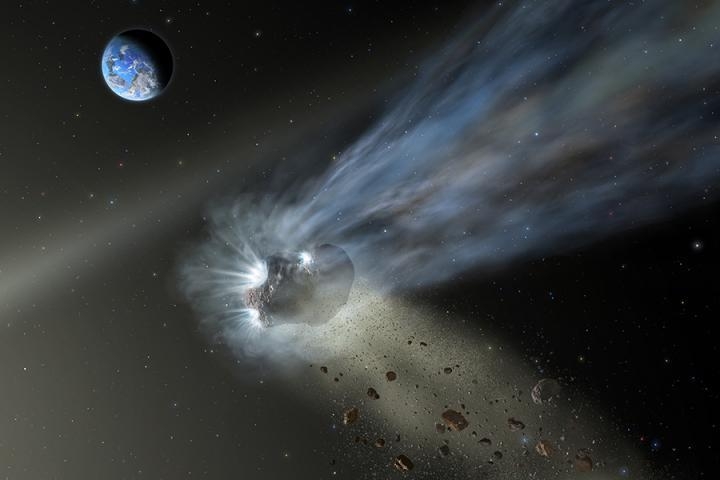Supporting the theory of carbon comet transmission… Analysis with SOFIA infrared device

[NASA/SOFIA/ Lynette Cook 제공/ 재판매 및 DB 금지]
(Seoul = Yonhap News) Reporter Eom Nam-seok = Academia reported that carbon was also confirmed in the tail of the comet’Catalina’ (C/2013 US10) that left the sun in January 2016. This was suggested to further support the fact that the starting point of life on Earth could be the carbon brought by a comet.
According to NASA, a research team led by Professor Charles Woodward of the University of Minnesota’s Astrophysical Research Institute published the findings of carbon rich in the dust tail of comet Catalina in the journal Planetary Science Journal.
The research team used infrared equipment from the Stratospheric Infrared Observatory (SOFIA) operated by NASA and the German Aeronautical and Space Center (DLR) as a converted Boeing 747 to observe the dust tail of Catalina as it approached the Earth as far as 110 million kilometers. .
Comet Catalina came from the Ort cloud at the end of the solar system, and after the first and last approach to the sun, it escapes from the solar system.
“Carbon is the key to discovering the origin of life on Earth,” Professor Woodward said. “We are still not sure whether the planet had enough carbon when it was formed, so the carbon-rich comets are the essential elements that lead to the birth of life.” It could be an important source for you to pass on.”
The researchers used SOFIA to observe the dust and gas components that make up Catalina’s tail, confirming that it was rich in carbon, which was interpreted as suggesting that Catalina was formed outside the primitive solar system.
Carbon is a key element indispensable to life, but it has been estimated that the rocky planets inside the solar system, including Earth, could not survive through the formation of ultra-high temperatures. On the other hand, large gaseous planets outside the solar system, such as Jupiter and Neptune, have been thought to form at lower temperatures and allow carbon to exist.

[NASA 제공/ 재판매 및 DB 금지]
Jupiter, the largest planet in the solar system, has been playing a role of blocking carbon from entering and mixing into the solar system due to its enormous gravity.As Jupiter’s orbit changes slightly, comets enter the solar system and collide with Earth and Mars to transfer carbon. The research team explained that it came to play a role.
The team found that the rich carbon in comet Catalina explains how planets formed through ultra-high temperature processes in the carbon-lean regions of the inner solar system got the elements of life.
“All rocky planets are objects that can be hit by comets or other small objects with carbon,” said Professor Woodward. “We are getting closer and closer to understanding how the collisions that occurred in the early stages of planet formation promoted the emergence of life.” did.
“More observations need to be made to determine whether other comets in the Ort Cloud are also rich in carbon. These observations will support the fact that the comets brought carbon and other elements of life.”
Unauthorized reproduction-redistribution prohibited>
2021/03/08 11:06 sent
